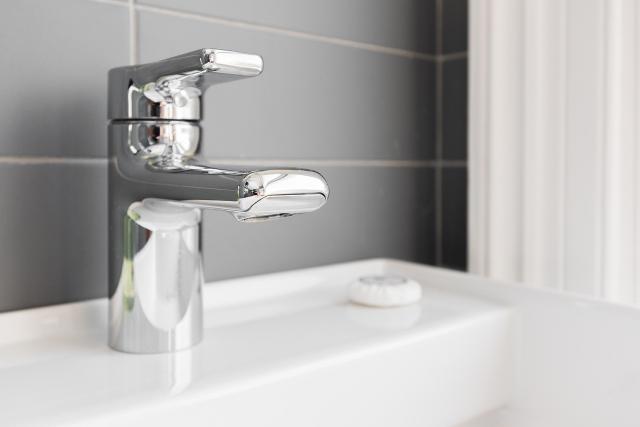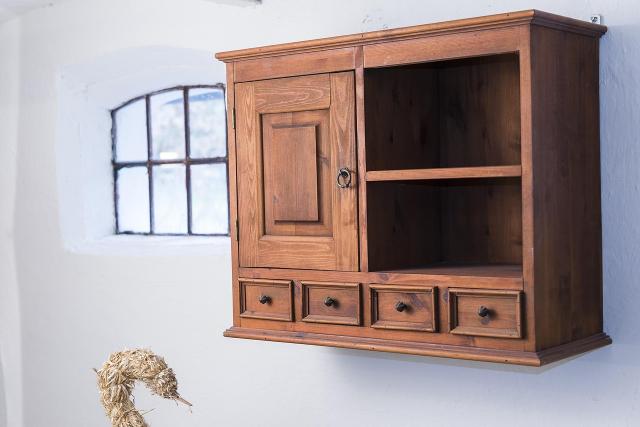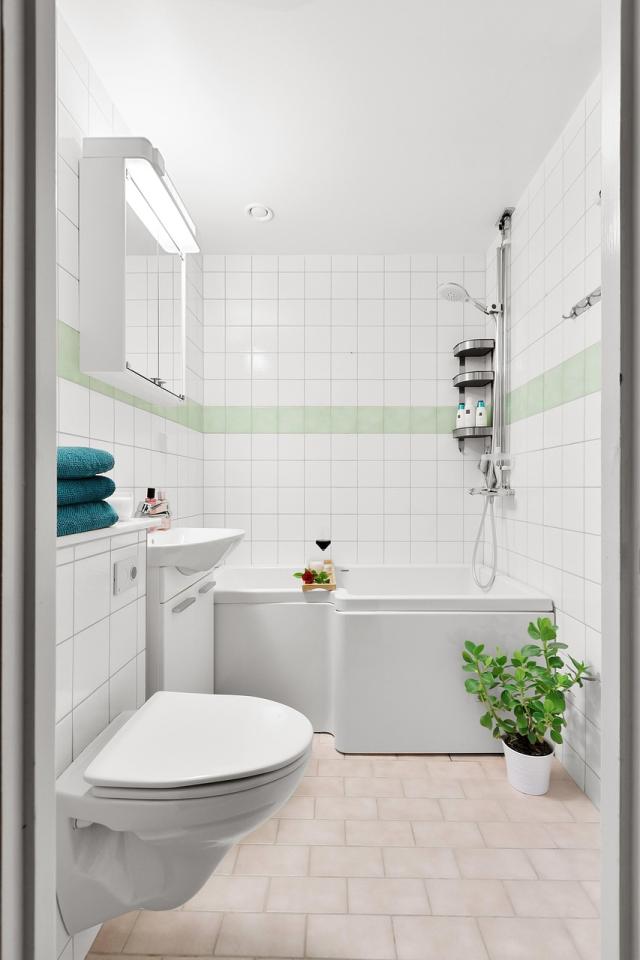
Best Materials for Bathroom Sinks: 8 Options to Consider...
Choosing the perfect bathroom sink isn't as simple as it seems. It’s not just about looks—it’s ab...

When choosing furniture for your bathroom, durability is just as important as design. Bathrooms are naturally humid and warm, creating a challenging environment for materials. Moisture, temperature swings, and cleaning products can wear down even the sturdiest items over time.
To help you make a smart, lasting investment, we’ve compiled a guide to the best materials for bathroom furniture in American homes. Whether you're shopping for a vanity, storage cabinet, or shelving unit, here's what to consider for long-term performance and aesthetic appeal.
Medium-Density Fiberboard (MDF) is a popular engineered wood product used in many American bathrooms. It’s made from compressed wood fibers and offers better density and moisture resistance than standard particle board (chipboard).
MDF is usually coated with glossy enamel or waterproof laminate that makes it resilient to splashes and easy to clean. It's ideal for vanity cabinets, wall panels, and shelving in mid- to high-end bathroom renovations.
Why It Works:
Smoother and denser than regular particle board
Coated surfaces don’t absorb moisture
Affordable yet durable
Looks sleek when lacquered or painted
Watch Out For:
Needs sealed edges to prevent water infiltration
Higher cost than cheaper alternatives like laminated chipboard
Popular brands like Senta, Aquaton, and Corozo often use MDF in their bathroom furniture collections for its balance of price and performance.
Laminated particle board, often called LDPB, is made by compressing wood chips with a water-resistant coating—usually melamine or PVC foil. While it’s not as moisture-proof as MDF, it’s significantly more affordable and widely used for budget-conscious bathroom makeovers.
Thanks to the addition of paraffin during manufacturing, LDPB has better resistance to humidity than traditional chipboard.
Why Americans Choose It:
Very affordable, great for renters or starter homes
Lightweight and easy to install
Available in many finishes and patterns
Easy to clean with household products
What to Consider:
Susceptible to swelling if the laminate layer is damaged
Less durable than MDF or real wood
Edges need protective trim to avoid moisture damage
Brands like Roca and Style Line offer vanities and under-sink cabinets made from LDPB at accessible prices.
Plastic furniture—especially acrylic—is an increasingly common choice for bathrooms in the USA. Whether used for vanities, storage units, or mirror cabinets, plastic offers a highly water-resistant, lightweight, and low-maintenance solution.
Why It’s a Smart Choice:
Totally waterproof: won’t warp or swell
Very lightweight and easy to handle
Compatible with almost any cleaning product
Naturally slip-resistant when used for bathtubs and shower trays
Available in many styles and colors
Potential Downsides:
May feel less premium than wood or stone
Susceptible to surface scratches over time
Plastic furniture is ideal for families with small children or seniors, thanks to its non-slip and low-maintenance properties.
Wooden bathroom furniture adds natural beauty and timeless charm to any space. But because of the humidity, not just any wood will do. For American homes, only dense, durable hardwoods like oak, teak, or beech should be used.
With proper sealing and treatment, wooden vanities and storage pieces can last for many years. Most are polished and finished with protective layers that prevent mold, warping, and water damage.
Why It’s Worth the Investment:
Rich texture and warm aesthetic
Long-lasting when maintained properly
High-end appearance boosts home value
Eco-friendly when responsibly sourced
Considerations:
Pricier than engineered options
Requires regular maintenance and refinishing
Sensitive to scratches and dents
If you're after a high-end spa look, solid wood furniture is unmatched. American and European manufacturers often offer custom finishes that suit both traditional and eco-style bathrooms.
While not as common as wood or plastic, metal bathroom furniture is becoming more popular—especially in industrial or minimalist homes. Stainless steel is the go-to choice because it doesn’t rust or corrode in damp spaces.
Metal is typically used for frames, legs, or drawer handles, often paired with MDF or glass. Full-metal cabinets are rare but do exist, usually made of stainless steel, aluminum, or occasionally cast iron.
Perks of Metal Furniture:
Highly resistant to moisture and mold
Long-lasting and hygienic
Modern, clean aesthetic
Can add visual contrast to wood or glass
Things to Keep in Mind:
Can be heavy and cold to the touch
Fingerprints and water spots may show easily
More expensive than basic materials
Metal furniture is great for high-traffic bathrooms or modern home designs where durability is a top priority.
Tempered glass is another niche but elegant material for bathroom furniture. While it’s often used for countertops or doors, entire vanities and storage units made from frosted or colored glass are now available.
Glass furniture is durable, safe, and moisture-proof, thanks to a heating process that strengthens the material.
Why It Shines:
Water- and stain-resistant
Doesn’t rust or corrode
Adds a luxurious, contemporary look
Easy to wipe clean
Downsides:
Can chip or crack under impact
Often more expensive
Shows fingerprints and smudges
Tempered glass works best in modern bathrooms where aesthetic appeal and cleanliness are key.
Quartz and granite are typically reserved for countertops in bathroom vanities due to their high price—but they deliver unmatched elegance and resilience.
Granite is a natural stone known for its strength, water resistance, and natural patterning. Quartz is engineered from stone particles and resin, offering similar benefits but with added scratch resistance.
Why Homeowners Love Them:
Nearly indestructible
Stain- and scratch-resistant
Heat- and moisture-resistant
Adds luxury appeal to any bathroom
Points to Consider:
Expensive
Heavy—requires solid vanity base
Professional installation usually required
If you want a countertop that will last a lifetime, quartz and granite are hard to beat. They’re particularly popular in upscale American remodels and new constructions.
When furnishing your bathroom, choose materials based on your budget, lifestyle, and design goals. Here’s a quick summary:
For budget-friendly projects, LDPB and plastic are great options.
For mid-range durability and design, MDF offers balance.
For luxury finishes, go for solid wood, glass, or quartz countertops.
For modern and humid-resistant bathrooms, stainless steel and tempered glass are excellent.
No matter which material you choose, be sure to verify that it’s moisture-resistant and properly sealed or coated for bathroom use. If you’re unsure, consult with a bathroom furniture specialist or interior designer who understands the demands of the space.
American homeowners are increasingly blending functionality with style, so don’t be afraid to mix materials—wood with steel, glass with stone—to create a space that fits your lifestyle and reflects your taste.

Best Materials for Bathroom Sinks: 8 Options to Consider...
Choosing the perfect bathroom sink isn't as simple as it seems. It’s not just about looks—it’s ab...

When renovating a bathroom, one of the most important design choices you'll make is the size of t...

Thanks for joining our homeowners’ community.
Stay tuned!
Choose the category
Choose the category